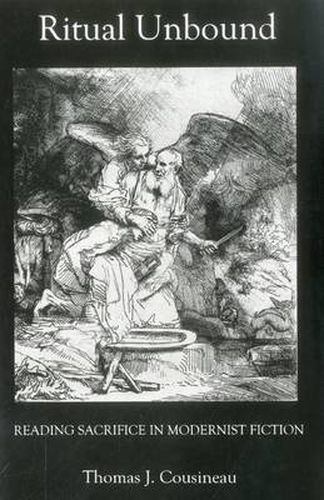Readings Newsletter
Become a Readings Member to make your shopping experience even easier.
Sign in or sign up for free!
You’re not far away from qualifying for FREE standard shipping within Australia
You’ve qualified for FREE standard shipping within Australia
The cart is loading…






This study explores the vestiges of primitive sacrificial rituals that emerge in a group of canonical modernist novels, including The Turn of the Screw, Heart of Darkness, The Good Soldier, The Great Gatsby, and To the Lighthouse. It argues that these novels reenact a process that achieved its seminal expression in the Genesis story of ‘The Binding of Isaac,’ in which Abraham, having been prevented from sacrificing Isaac, offers up a ram in his place. Modernist reenactments of this pattern present narrators who, although vigorously protesting the victimization of certain characters, unfailingly seize upon others as their surrogates. Each novel is designed in such a way, however, as to resist the reconstruction of a sacrificial ritual to which its narrator is prone. The resulting tension between the binding and unbinding of ritual persecution dramatizes the paradox that we can neither believe convincingly in the guilt of our scapegoats nor imagine a society that has dispensed with them entirely.
$9.00 standard shipping within Australia
FREE standard shipping within Australia for orders over $100.00
Express & International shipping calculated at checkout
This study explores the vestiges of primitive sacrificial rituals that emerge in a group of canonical modernist novels, including The Turn of the Screw, Heart of Darkness, The Good Soldier, The Great Gatsby, and To the Lighthouse. It argues that these novels reenact a process that achieved its seminal expression in the Genesis story of ‘The Binding of Isaac,’ in which Abraham, having been prevented from sacrificing Isaac, offers up a ram in his place. Modernist reenactments of this pattern present narrators who, although vigorously protesting the victimization of certain characters, unfailingly seize upon others as their surrogates. Each novel is designed in such a way, however, as to resist the reconstruction of a sacrificial ritual to which its narrator is prone. The resulting tension between the binding and unbinding of ritual persecution dramatizes the paradox that we can neither believe convincingly in the guilt of our scapegoats nor imagine a society that has dispensed with them entirely.